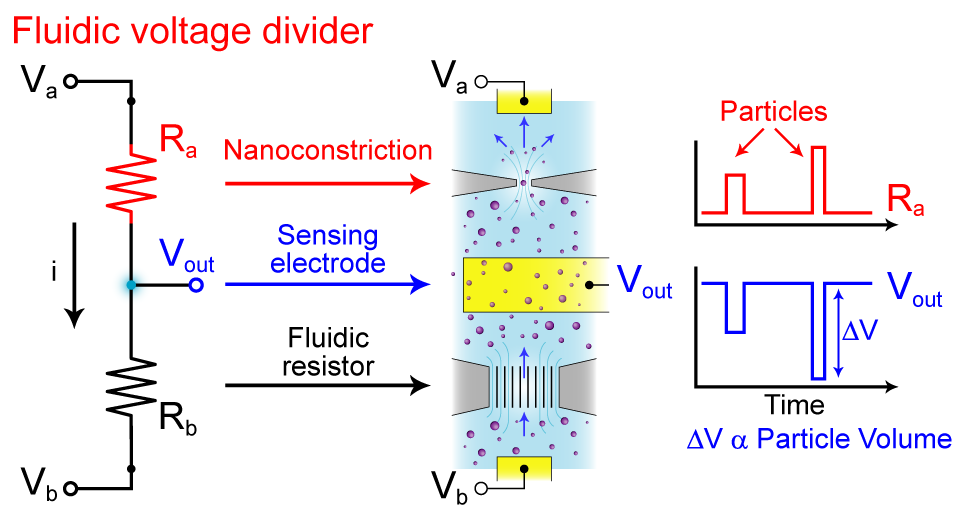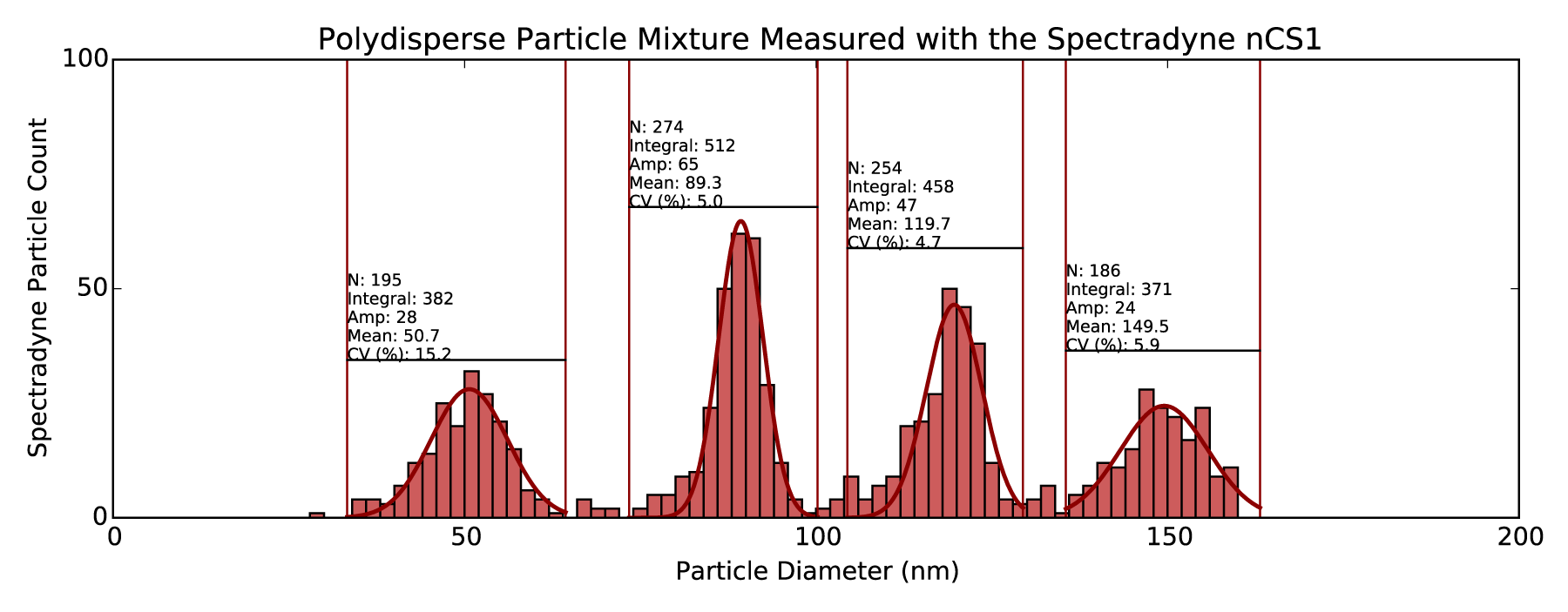Applications
Nanoparticle Analysis of Polydispersity
Polydisperse mixtures
A polydisperse particle mixture is one in which the constituent particles vary in size, shape, or molecular weight. The size distribution in such mixtures can be difficult to ascertain; bulk optical properties of the mixture, such as opacity, do not give detailed information about the population distribution. This is especially true as particle sizes decrease into the deep sub-micron range.
High resolution measurements
The details of a nanoparticle population can contain critical information. For example, aggregation phenomena can lead to the failure of otherwise effective biopharmaceutical formulations. Properties of synthetic nanoparticles are often heavily dependent on the size of the nanoparticles. Therefore, quality control of novel nanotechnology-enabled materials relies on the ability to make high resolution measurements of nanoparticle mixtures.
Spectradyne’s technology
Spectradyne’s technology is based on resistive pulse sensing, a technique in which particles suspended in fluid are detected one-by-one, by electrical means, as they pass through a constriction. A schematic representation is shown to the right; more information can be found in Reference 1. By individually measuring each particle, Spectradyne’s nCS1TM and ARCTM instruments report the details of complex nanoparticle mixtures in high resolution.
Suspensions
Spectradyne’s technology requires the suspending fluid is at least weakly conducting (10 mM NaCl is sufficient), with particle concentrations from 107 to 1012 particles/mL. Particles can be made of any material: the technology works for conducting as well as insulating particles and does not depend on e.g. the index of refraction of the particles.
Example
The nCS1 was used to measure a polydisperse mixture of synthetic polystyrene beads with nominal diameters of 50 nm, 90 nm, 120 nm and 150 nm, mixed together in a 100 mM solution of NaCl. The resulting measurement is shown in the figure to the right, showing the very high measurement resolution of this instrument, where clearly separated peaks are distinguishable with good counting statistics for just 10 seconds of measurement time.
Reference 1. J.-L. Fraikin, T. Teesalu, C. M. McKenney, E. Ruoslahti, A. N. Cleland, “A high-throughput label-free nanoparticle analyser,” Nature Nanotechnology 6, 308-313 (2011).

